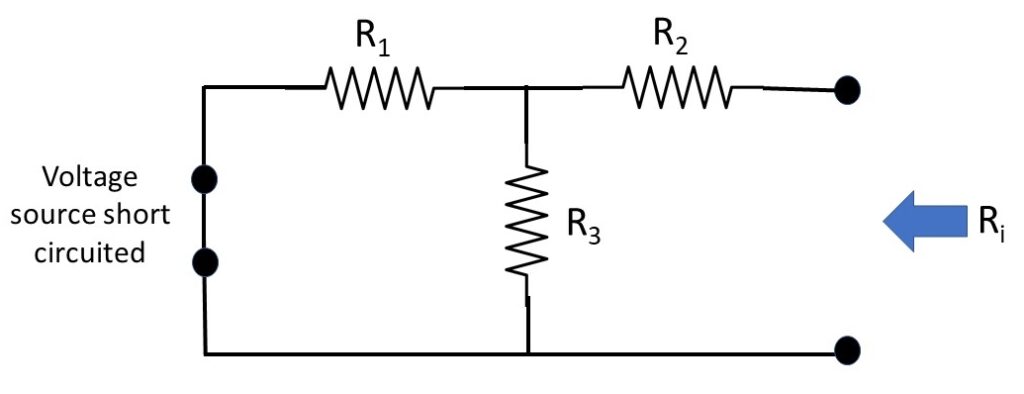Experiment No.: 1
Experment Name:
Use Voltmeter, Ammeter to Determine Equivalent Circuit Parameter in a Given Circuit by
Applying Thevenin’s Theorem.
Objective:
To verify Thevenin’s theorem.
Theory:
Thevenin’s theorem may be stated as follow, “The current flowing through a load resistance RL connected across any two terminal A and B of a linear, active, bilateral network is given by Voc/ (Ri+RL) where Voc is the open circuit voltage (i.e. voltage across the two terminals when RL is removed) and Ri is the internal resistance of the network as viewed from back into the open circuited network from terminal A and B with all voltage sources replaced by their internal resistance (if any) and current sources by infinite resistance.”
Circuit Diagram:



Observation:
- When load resistance (RL) is attached/connected with the circuit then current flowing through it is IL = 39.8 mA.
- RL is disconnected and measured the open circuit voltage, Voc = 9.75 V viewing from the output terminal.
- RL is disconnected and voltage source is short circuit and measured the internal resistance of the circuit, Ri =137.3 ohm viewed from the output terminal.
- All resistances and volatge source is connected as per circuit and load current flowing through the load is measured, IL = 39.8 mA
- A circuit (Thevenin’s equivalent circuit) is created with a voltage source (Voc) = 9.75 V and series resistance (Ri) = 137.3 ohm, load resistance (RL) = 100 ohm, then load current calculated is (IL) = 39.8 mA.
- Now measured load current is checked with calculated load current, which is merely same.
Thevenin’s Equivalent Circuit:

Calculation:
IL = VOC/(Ri+RL)
Apparatus Used:
| Sl. No. | Name of the apparatus | Specification | Quantity | Maker’s Name |
| 1 | DC Network Theorem Trainer Kit | 230 V Input | 1 | M.E.W. |
| 2 | Digital Multimeter as ammeter | 0-10 A | 1 | Akademika |
| 3 | Carbon Component Resistor | 100 Ohm | 1 | |
| 4 | DC Source | 0-30 V | 1 | Sushama |
Remarks:
The observational values and calculated values are nearly same. The difference between them is for instrumental and observational error. Neglecting this error, Thevenin’s theorem is verified posistively.
